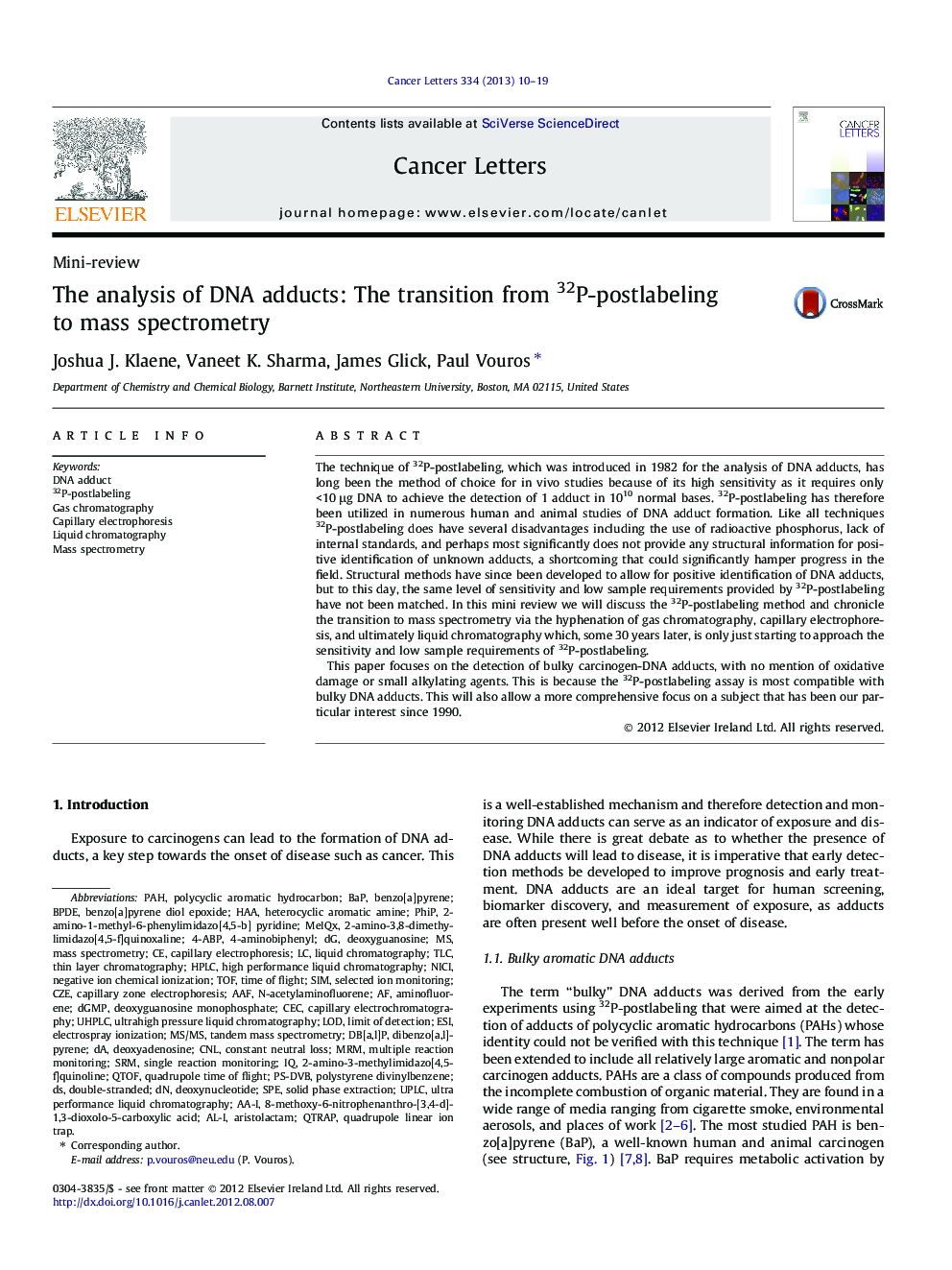| کد مقاله | کد نشریه | سال انتشار | مقاله انگلیسی | نسخه تمام متن |
|---|---|---|---|---|
| 2112981 | 1084432 | 2013 | 10 صفحه PDF | دانلود رایگان |

The technique of 32P-postlabeling, which was introduced in 1982 for the analysis of DNA adducts, has long been the method of choice for in vivo studies because of its high sensitivity as it requires only <10 μg DNA to achieve the detection of 1 adduct in 1010 normal bases. 32P-postlabeling has therefore been utilized in numerous human and animal studies of DNA adduct formation. Like all techniques 32P-postlabeling does have several disadvantages including the use of radioactive phosphorus, lack of internal standards, and perhaps most significantly does not provide any structural information for positive identification of unknown adducts, a shortcoming that could significantly hamper progress in the field. Structural methods have since been developed to allow for positive identification of DNA adducts, but to this day, the same level of sensitivity and low sample requirements provided by 32P-postlabeling have not been matched. In this mini review we will discuss the 32P-postlabeling method and chronicle the transition to mass spectrometry via the hyphenation of gas chromatography, capillary electrophoresis, and ultimately liquid chromatography which, some 30 years later, is only just starting to approach the sensitivity and low sample requirements of 32P-postlabeling.This paper focuses on the detection of bulky carcinogen-DNA adducts, with no mention of oxidative damage or small alkylating agents. This is because the 32P-postlabeling assay is most compatible with bulky DNA adducts. This will also allow a more comprehensive focus on a subject that has been our particular interest since 1990.
• 32P-postlabeling has been the method of choice for studying DNA adducts in vivo.
• The lack of structural information provided by 32P-postlabeling led to hyphenation of GC, CE, and LC with MS.
• HPLC or UHPLC with online column switching is approaching the sensitivity of 32P-postlabeling for DNA adduct analysis.
Journal: Cancer Letters - Volume 334, Issue 1, 28 June 2013, Pages 10–19